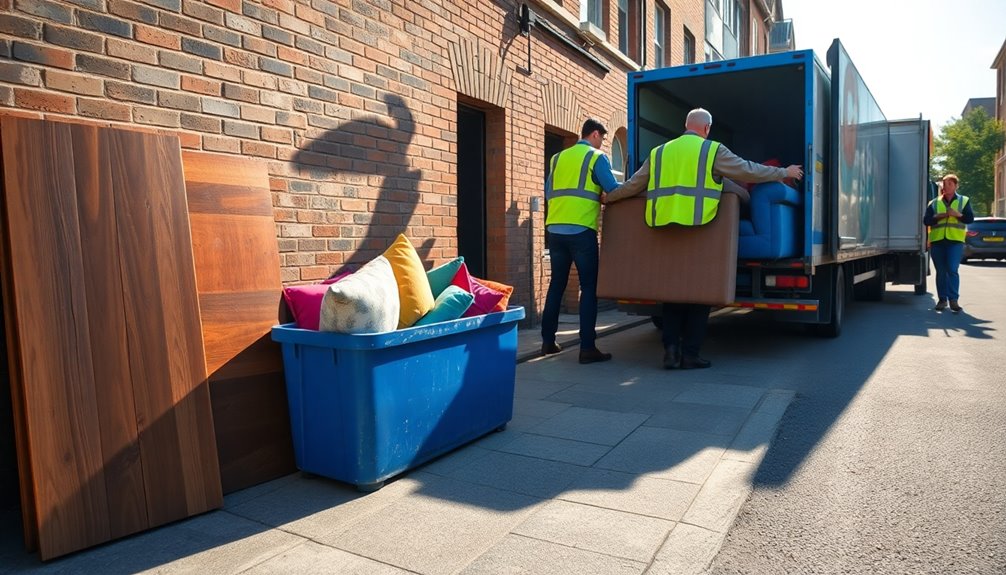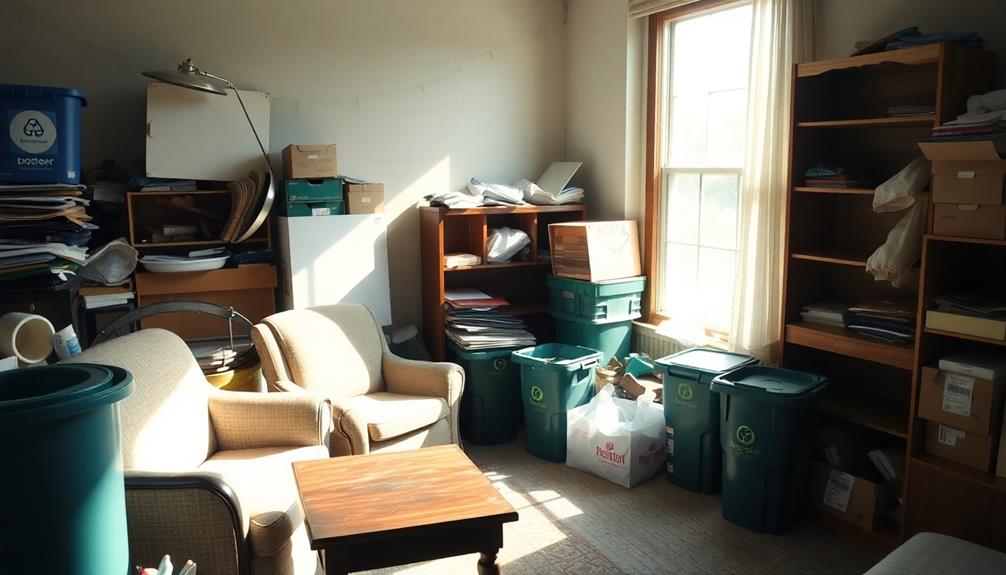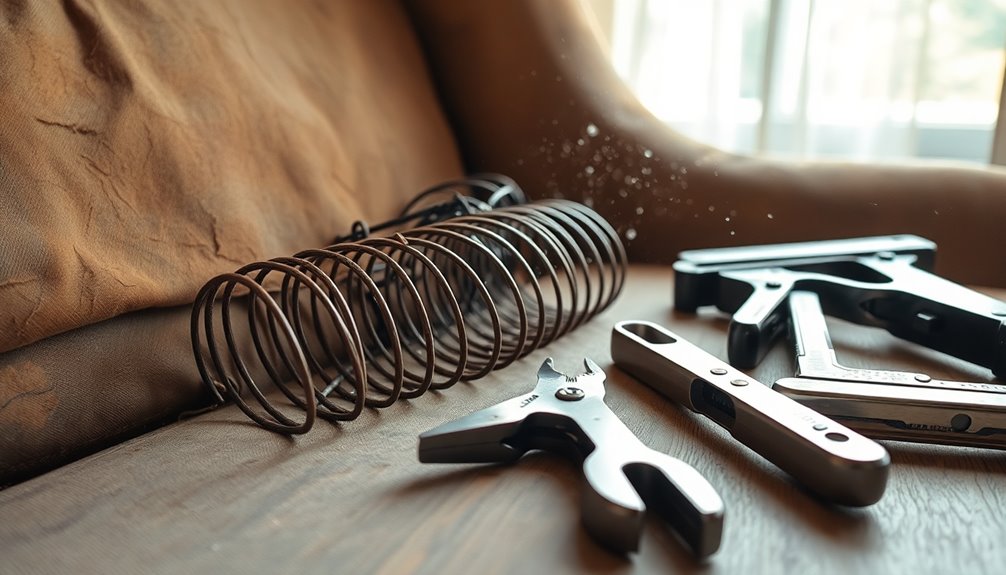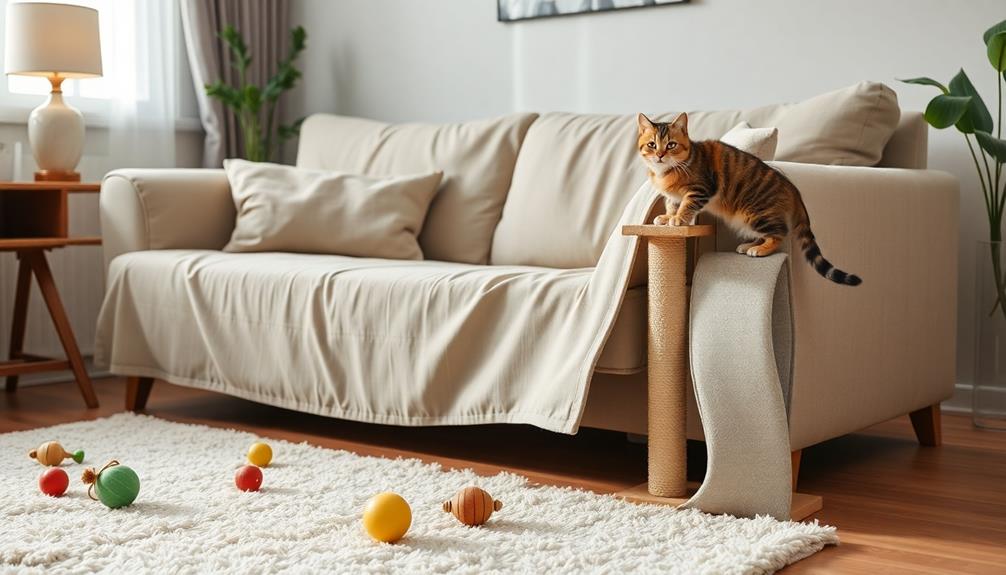Disposing of large furniture can be easy if you choose the right approach. You can rent a roll-off dumpster for straightforward disposal, or hire a junk removal service for convenience—they handle everything for you. If you prefer, take your items to the landfill, but check local regulations first. Leaving furniture at the curb is another option, just be sure to follow collection guidelines. Consider donating your items to local charities or recycling them at designated centers. Each method has its pros and cons, and there's more to explore about making your disposal efficient and eco-friendly.
Key Takeaways
- Rent a roll-off dumpster for versatile disposal of large furniture, with options for delivery and pickup based on your needs.
- Hire a junk removal service for convenient, eco-friendly disposal, ensuring safe handling and potential donation of usable items.
- Donate to local charities like Habitat for Humanity or Goodwill, potentially receiving free pickup and a tax deduction receipt.
- Take items to the landfill, ensuring compliance with local regulations, and factor in gate fees and transport time.
- Sell furniture through online platforms, using high-quality images and competitive pricing to maximize visibility and potential profit.
Renting a Roll Off Dumpster
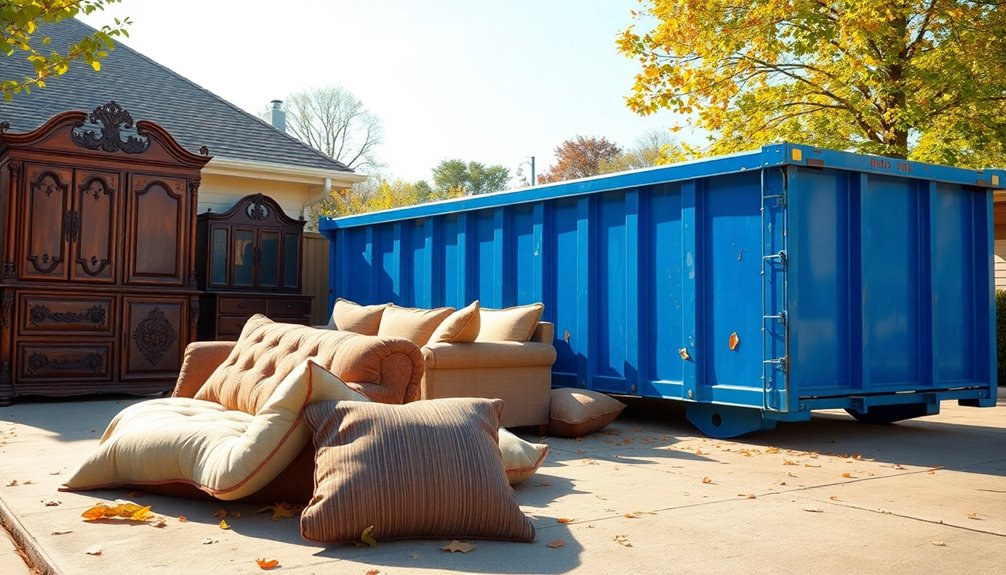
When tackling large furniture disposal, renting a roll-off dumpster can simplify the process significantly. Start by choosing the right dumpster size for your project. For small-scale cleanouts, a 10-yard dumpster is perfect, holding about 50-60 33-gallon trash bags. If you're handling furniture removal or a small remodel, consider a 12-yard option, which accommodates around four pickup truck loads. For larger projects, like kitchen remodels, a 15-yard dumpster works well, while a 20-yard dumpster is ideal for extensive cleanouts or flooring removal.
You'll be able to dispose of various items, including couches, appliances, and construction debris, making it a versatile choice. The rental process is straightforward, with upfront pricing that helps you budget effectively. Plus, the dumpster's delivery and pickup are hassle-free, allowing you to focus on your project without worrying about waste management. Additionally, choosing a rental provider with over 25 years of trusted waste collection experience ensures reliable service.
Before renting, make sure to measure your delivery spot for adequate clearance and check for prohibited items. By coordinating with the rental provider, you can ensure a smooth experience. With a roll-off dumpster on-site, you'll maintain a clear and safe work area while efficiently managing your large furniture disposal.
Hiring a Junk Removal Service
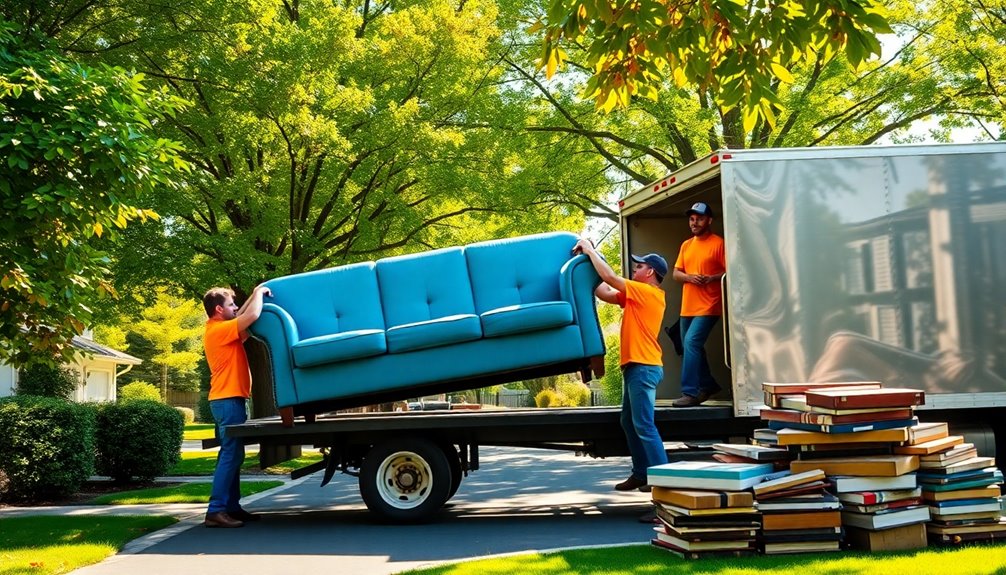
Hiring a junk removal service can make disposing of large furniture a breeze. You won't have to worry about heavy lifting or transporting items to the curb. With a simple appointment booking and a free onsite estimate, the process is efficient and stress-free.
These services handle a variety of items, including sofas, recliners, and appliances like refrigerators or televisions. Their trained professionals ensure safe and damage-free removal. Plus, they prioritize eco-friendly disposal, donating usable items to local charities and recycling whenever possible(Group 1).
When you schedule an appointment, you'll receive a pre-arrival notification so you know when to expect the crew. They'll take care of everything, loading your furniture without requiring your assistance. You'll appreciate their clear pricing, which is based on the volume of items, with no hidden fees to worry about.
Many junk removal companies guarantee competitive rates, often promising to beat other written estimates. With insured and professional crews, you can trust that your unwanted furniture will be handled safely and responsibly. By choosing this option, you'll save time and effort while ensuring your items are disposed of properly.
Taking It to the Landfill
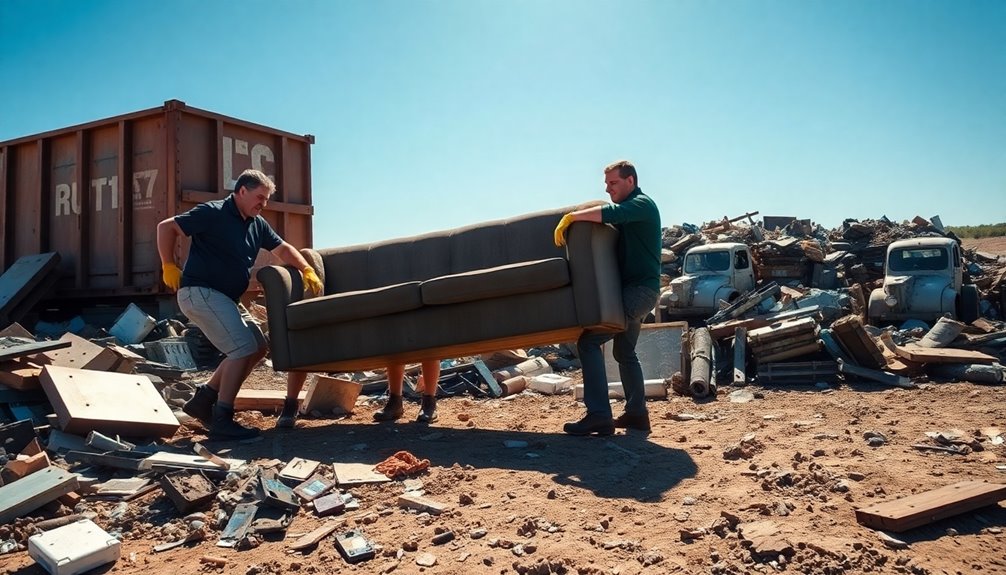
If you prefer a hands-on approach to dispose of your large furniture, taking it to the landfill is a viable option. First, check your local landfill rules to ensure they accept furniture and understand any restrictions. Before loading, remove any hazardous materials—like batteries or fluorescent bulbs—since these can’t be mixed with furniture. Disassemble larger items into smaller pieces for easier transport, and if you’re disposing of appliances, drain any water or refrigerants according to guidelines. If you’re looking for a more sustainable option, consider learning how to recycle old furniture. Many local recycling centers accept furniture and can even refurbish or repurpose items that are still in usable condition. Additionally, research donation centers or charities that may gladly take your unwanted furniture to give it a second life, reducing waste and helping those in need.
When you're ready to head to the landfill, use a pickup truck for transport. Schedule your trip, keeping in mind the landfill's hours and any designated bulk waste days. Load the furniture carefully to secure it for the drive. Be aware that landfills often charge gate fees, typically ranging from $10 to $50 per ton, so check those costs beforehand. Additionally, many landfills and transfer stations in Central Texas are appropriate drop-off locations for bulky waste, ensuring local compliance with disposal regulations.
Finally, consider the time and effort needed for this process, including loading and unloading. If you need help unloading, see if the landfill offers assistance, though it may not always be available. By following these steps, you can effectively dispose of your large furniture at the landfill.
Leaving It at the Curb
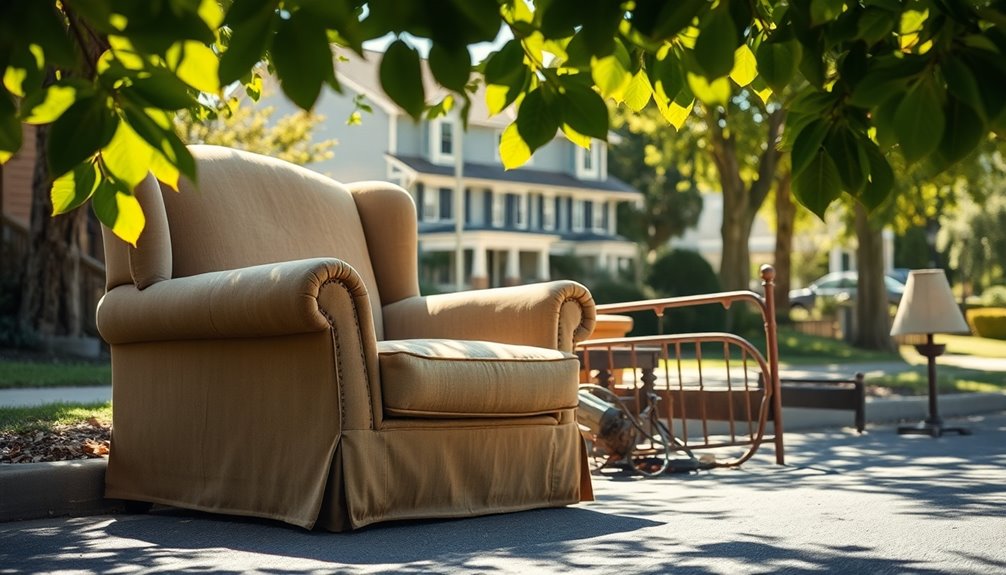
Leaving large furniture at the curb can be a convenient way to dispose of unwanted items. To ensure a smooth pickup, place your items on the curb after 4 PM the night before your scheduled collection. Make sure they're not obstructing the street or pedestrian traffic, and keep them off private property. Clear at least five feet from other objects like mailboxes or parked cars to aid in safe collection.
Prepare your items properly: empty all appliances, secure refrigerator doors with tape, and enclose mattresses in sealed plastic bags. Additionally, remember that DSNY allows curbside removal of up to 6 bulk items on regular collection days. Bundle any yard waste tightly and remove sharp objects to prevent injuries.
Scrap or Recycling Options
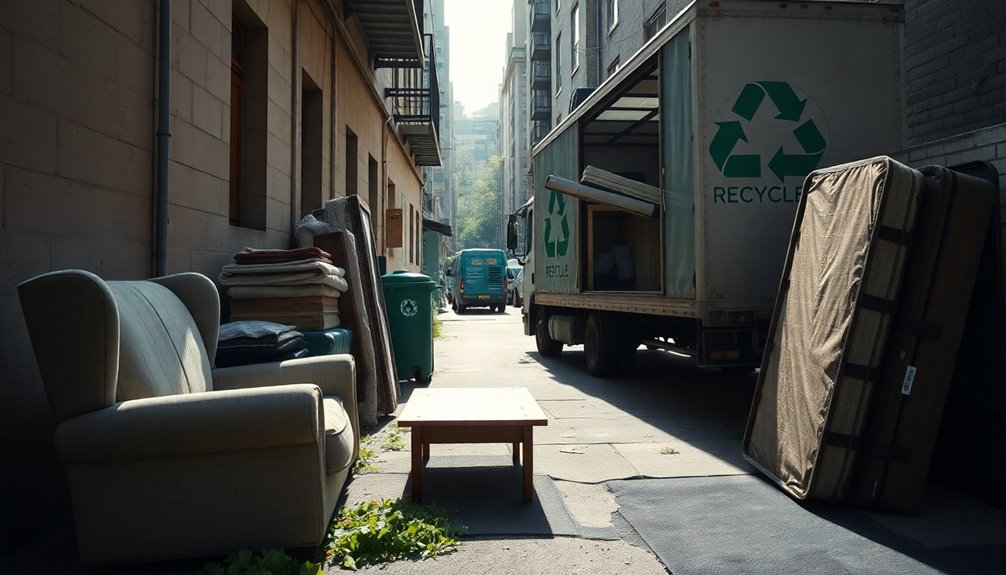
When you're looking to get rid of large furniture, considering scrap or recycling options is a smart move. If your furniture's made of metal, you can take items like chairs, tables, and bed frames to a scrap yard for recycling. Just remember to check if the yard accepts ferrous and non-ferrous metals, as disposal costs may vary. You can use a magnet to identify the metal type.
Recycling centers are another great option. Many accept furniture made of metal, wood, and other recyclable materials. By dismantling your furniture, you can separate different materials, which can then be recycled into new products like sculptures and park benches. Ensure you follow any specific guidelines the recycling center may have. In NYC, it's important to schedule pickup through the Department of Sanitation for proper disposal of large items.
If you're in a city like NYC, you can schedule pickups for large items through the Department of Sanitation. Just place your recyclables in the designated area the night before.
Lastly, consider professional services like 1-800-GOT-JUNK? or Junk King. They handle heavy lifting and ensure your furniture is recycled or disposed of properly, making the process convenient and eco-friendly.
Selling Your Furniture Online

Selling your furniture online can be a rewarding way to declutter while making some extra cash. Start by choosing the right platform. Online marketplaces like eBay and Facebook Marketplace are popular choices, but consider specialized platforms like Chairish for vintage pieces or AptDeco for used furniture in urban areas. You can even create your own e-commerce site using services like Wix.
When listing your furniture, invest time in taking high-quality photos and writing detailed descriptions that highlight its features and condition. Research similar items to set competitive prices, keeping in mind any listing fees that platforms may charge. If you want to sell quickly, consider pricing your items a bit lower.
Managing sales can be simple with tools like Ecwid, which lets you control multiple sales channels from one place, allowing for centralized control of your online sales. Offer local pickup for bulky items, and think about shipping options for broader reach. Don't forget to utilize social media to tap into your network. By leveraging various platforms and showcasing your items effectively, you'll maximize your reach and enjoy a smoother selling experience.
Donating to Local Charities
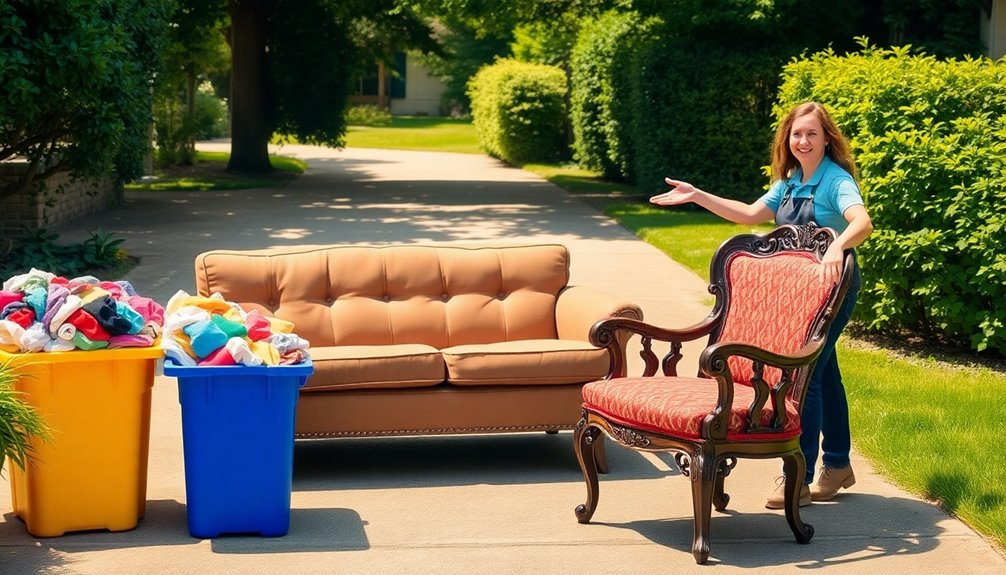
Have you considered donating your large furniture to local charities? It's a great way to give back while clearing space in your home. First, assess the condition of your furniture. Check for structural soundness and note any significant flaws. If items are in decent shape, you can move forward with donating.
Next, research local and national charities like Habitat for Humanity, The Salvation Army, and Goodwill. Each charity has specific guidelines on acceptable items, so verify that your furniture meets their requirements. Many of these organizations offer free pickup services for larger items, making it even easier to donate. Remember that donating furniture can also provide tax benefits for your charitable contributions.
Before donating, prepare your furniture by cleaning it thoroughly. Wipe down surfaces and vacuum upholstery. If you can, make minor repairs, like tightening screws or fixing wobbling legs. This makes sure the furniture is ready for immediate use by the recipient.
Finally, schedule a pickup or drop-off. Many charities offer free pickup services for larger items, while drop-off options are also available. Just confirm their operating hours and logistics beforehand. Don't forget to obtain a donation receipt for potential tax deductions. Your generous donation can make a significant difference in someone else's life!
Reusing Furniture Effectively
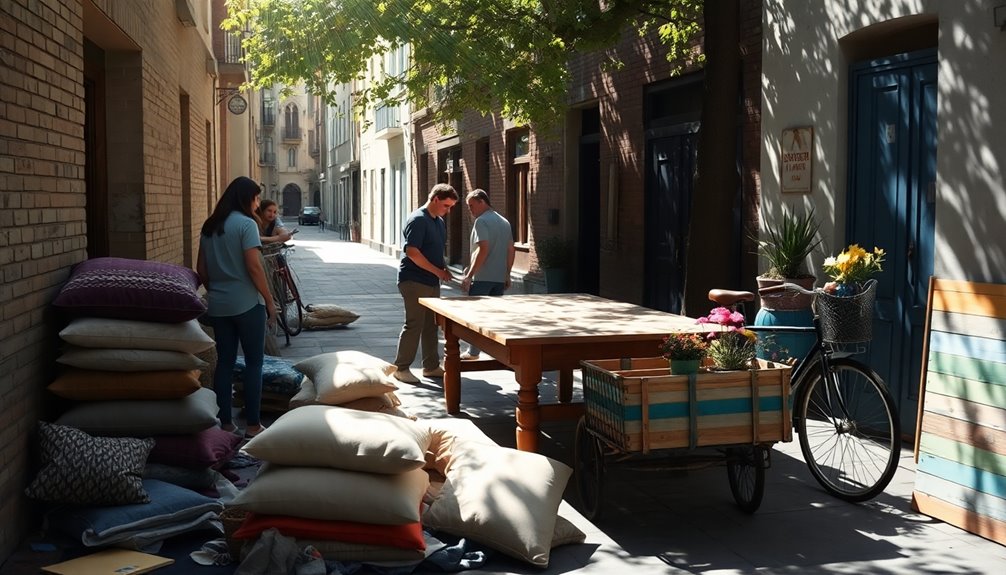
Reusing furniture effectively can breathe new life into your home while reducing waste. Instead of tossing out old pieces, consider upcycling them. For instance, you can transform an old dresser into a chic sideboard or bathroom vanity by adding fresh hardware and a coat of paint. An old ladder can become stylish shelves, perfect for any room. Replacing hardware can significantly refresh the aesthetics of your furniture.
If you have a vintage trunk, think about turning it into a coffee table or blanket holder by adding shelves for extra storage. Wooden crates can be easily repurposed into wall shelves or bookshelves, enhancing your space's organization.
For specific items, reupholstering antique chairs can modernize their appearance, and an old table can be converted into a functional kitchen island with wheels and new storage.
Don't overlook creative storage solutions; old trunks can serve as side tables and storage chests, while salvaged wood can create beautiful shelves or accent walls. With some DIY spirit and a few materials, you can add decorative elements to your furniture, giving it a fresh look. Embrace these ideas, and watch your old furniture transform into something new and exciting!
Local Regulations to Consider
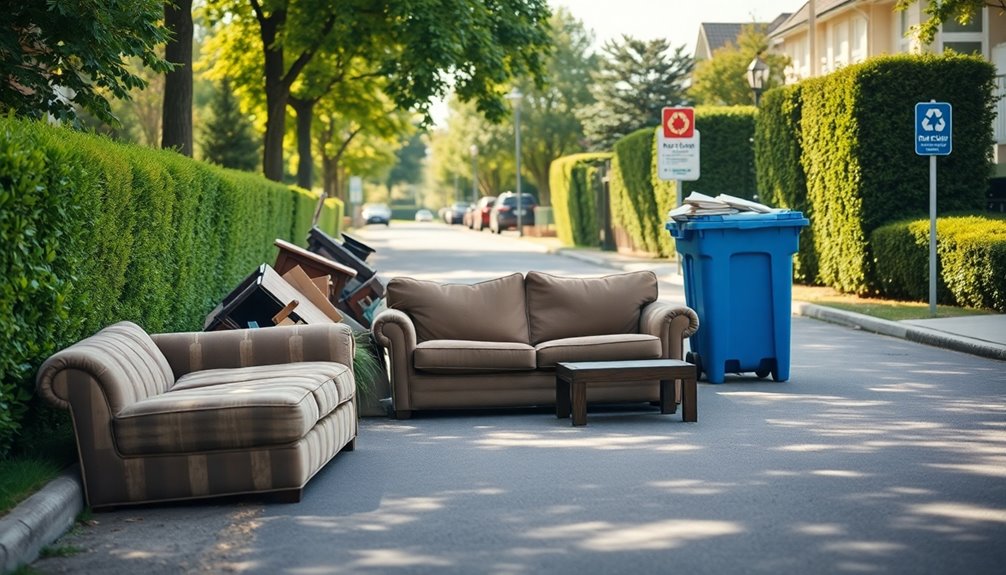
Understanding your local regulations is essential when disposing of large furniture. Each area has specific guidelines you must follow to avoid fines and ensure proper disposal. Typically, you'll need to set your furniture out in a designated area, like the curb or alley, the night before collection. Remember, placing items on private property isn't allowed.
You can dispose of up to 10 large items per collection day, but they must be collected on trash-only days—not recycling days. If possible, break down larger items to facilitate easier collection. Certain items require special disposal procedures. For instance, mattresses must be sealed in plastic bags, and appliances containing refrigerants need to be drained by a professional. Additionally, proper disposal of hazardous materials like batteries is crucial to comply with local regulations.
Recyclable items include metal bed frames and aluminum lawn furniture, while non-recyclable items include wooden tables and non-metal furniture. Make sure to double-bag and tape any broken glass. Lastly, hazardous materials like batteries should never be mixed with bulky waste. Always check your local guidelines for specific requirements, as regulations can vary significantly by location. Following these rules will help ensure a smooth disposal process.
Cost Comparison of Methods
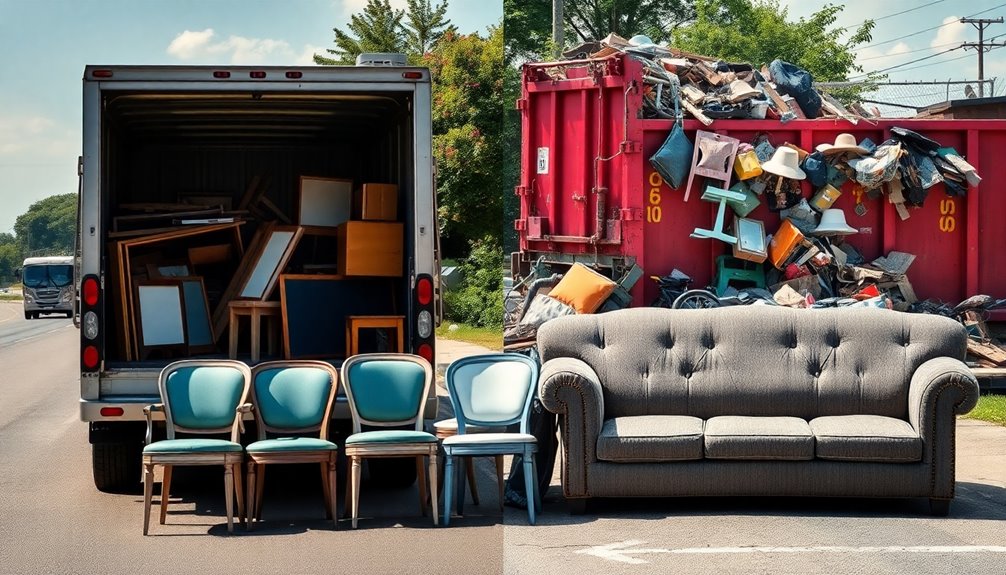
When it comes to disposing of large furniture, you'll often find a variety of cost options available, each with its own benefits and drawbacks. Hiring a junk removal company typically costs around $180, with prices ranging from $75 to $250 depending on the furniture type. For example, a mattress can run $75–$100, while a sectional might reach $100–$175. On the other hand, waste management bulk pickup can be more economical, usually costing $50-$75, with some companies allowing free pickups on regular collection days for a small fee.
If you're looking for a no-cost option, donating or giving away your items is a great choice, provided they're in good condition. Just remember, there's no guarantee someone will take them, especially if you place them on the curb. For those interested in scrap yards, you might earn a little cash for metal items, though you'll need to handle transportation yourself. DIY disposal can save money, but it's labor-intensive and may involve landfill dumping fees that can add up quickly. Ultimately, weigh the costs of convenience against the effort you're willing to invest to determine the best method for you.
Frequently Asked Questions
How Do I Prepare Furniture for Disposal?
To prepare furniture for disposal, start by checking local regulations regarding bulk item pickup. If permitted, consider breaking down large pieces into manageable sizes. Seal upholstered items in plastic if required. Schedule a pickup or drop-off and gather any necessary tags. If you're using a service, clear the area around the furniture and ensure no hazardous materials are mixed in. This'll make the process smoother and more efficient for you.
What Items Are Prohibited in Landfills?
When you're looking to dispose of items, remember that certain things are prohibited in landfills. You shouldn't toss hazardous materials like paints, batteries, or fluorescent bulbs. Large appliances like refrigerators and stoves also can't go in. Additionally, items such as tires, yard waste, and construction debris are often not accepted. Always check local regulations to ensure you're disposing of everything correctly and safely, keeping the environment in mind.
Can I Recycle Upholstered Furniture?
Yes, you can recycle upholstered furniture, but it requires some effort. You'll need to separate the materials like fabric, foam, wood, and metal. Once sorted, take them to their respective recycling centers. Many facilities can help with this process, ensuring the materials are properly handled and repurposed. If the furniture is still in good condition, consider donating it or selling it through local platforms to give it a second life.
How Can I Find Local Donation Centers?
To find local donation centers, start by using online databases like DonationTown, where you can enter your zip code to discover nearby charities that accept furniture. Check the Furniture Bank Network for participating organizations in your area. Don't forget to look into local Habitat for Humanity ReStores and other charities like Goodwill or The Salvation Army. Always verify their guidelines on accepted items and whether they offer pickup services before you proceed.
What Are the Environmental Impacts of Furniture Disposal?
When you dispose of furniture, you're contributing to significant environmental impacts. Landfilling can release harmful substances into the soil and water, and furniture decomposition creates methane, a potent greenhouse gas. Manufacturing new furniture generates far more CO2 than refurbishing old pieces. Additionally, the extraction of materials for production leads to deforestation and biodiversity loss. It's crucial to consider these effects when deciding how to handle unwanted furniture.
Conclusion
In conclusion, disposing of large furniture doesn't have to be a hassle. Whether you choose to rent a roll-off dumpster, hire a junk removal service, or donate to local charities, there are plenty of options available. Just remember to consider local regulations and costs involved. By exploring these methods, you can find the best solution that suits your needs while ensuring your old furniture is handled responsibly. Time to clear out that space and make room for something new!
